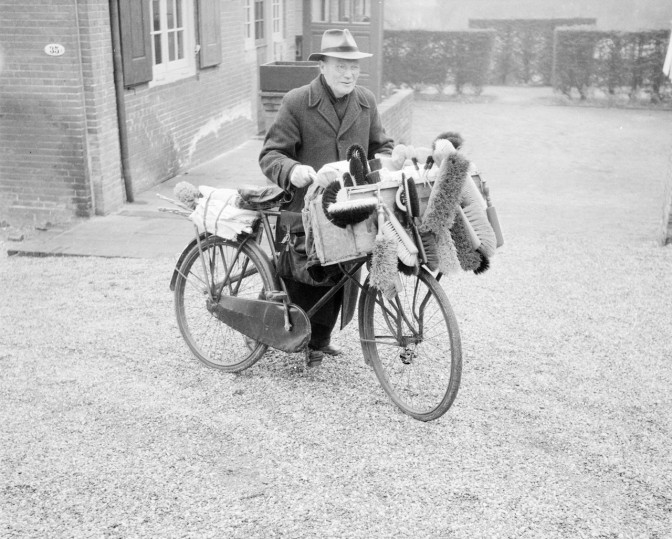As the Tour de France starts in the Netherlands this week, this is a good time to learn the meaning of a quintessentially Dutch word: fiets (bicycle).
Introduction of bikes
Fietsen were introduced in the Netherlands in the last part of the 19th century. They were quickly adopted and became the most popular mode of transportation. Fietsen were not just used for personal transportation, but also by businesses (a ‘bakfiets’ with a container on the front wheel can be used to carry many goods) and officials (cops on bikes are still a common sight in the city).
Bike tax
Between 1896 and 1941, a bike tax was levied. Some families still have the copper fietsplaatje [bike plate] that should be attached to a bike to show that the tax was paid. Poor people were exempted from paying the tax, and received a plate with a hole in it. Many people found this demeaning, as it signified to the whole world that the owner was a pauper. I have never seen bike tax records, and the finding aid of the Tax department at the National Archives website suggests that all that remains in terms of administration are the instructions and regulations, not the actual records that can tell you if your ancestors owned a bike.
Cycling today
The flat Dutch landscape is very suitable for biking. No wonder there are more bikes than people in our country. The 16.9 million people in the Netherlands own 24.5 million bikes, an average of 1.4 bikes per person! Many people own a cheap “please steal this one if you have to” city bike as well as a fancier tour bike, or have spare bikes for guests.
The biking infrastructure is very good, with separate bike lanes in many places. Many people cycle until old age: I know several people in their 90s who still ride bikes. My own grandmother bought a new bike when she was in her high 80s and joked that it would probably be her last. It was, but she enjoyed it until the end.

Brush salesman on bike. Credits: J.D. Noske, collection Nationaal Archief (CC-BY-SA)

